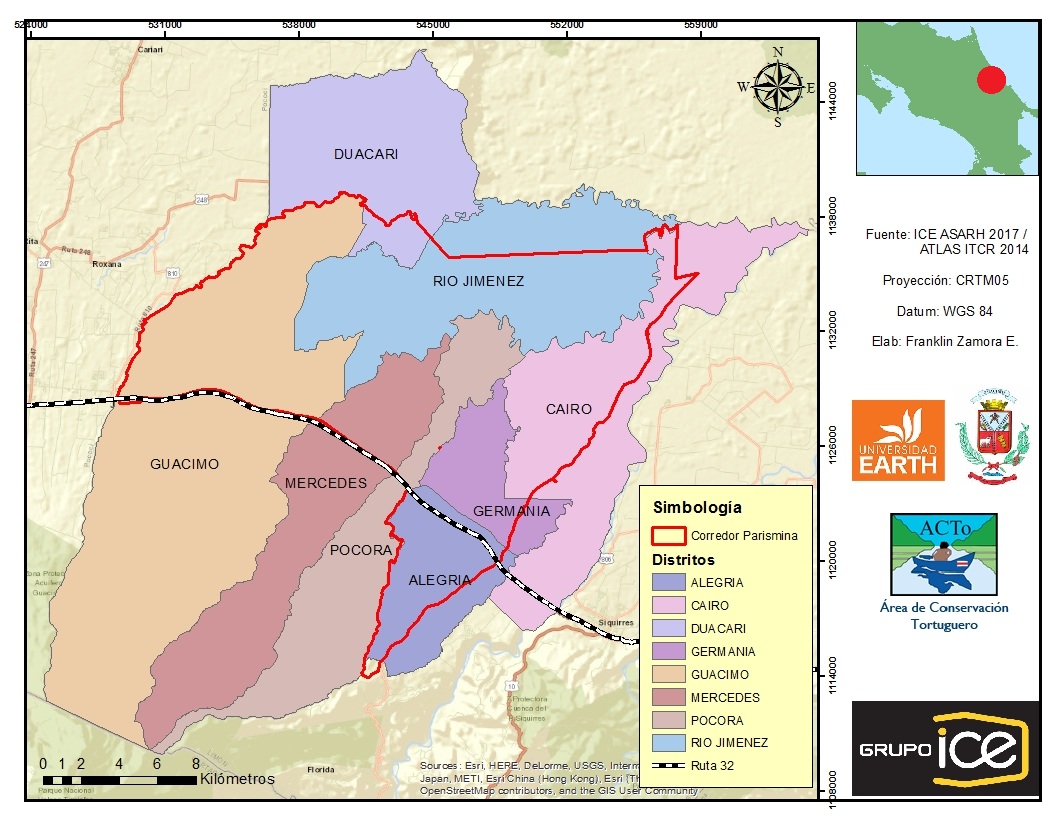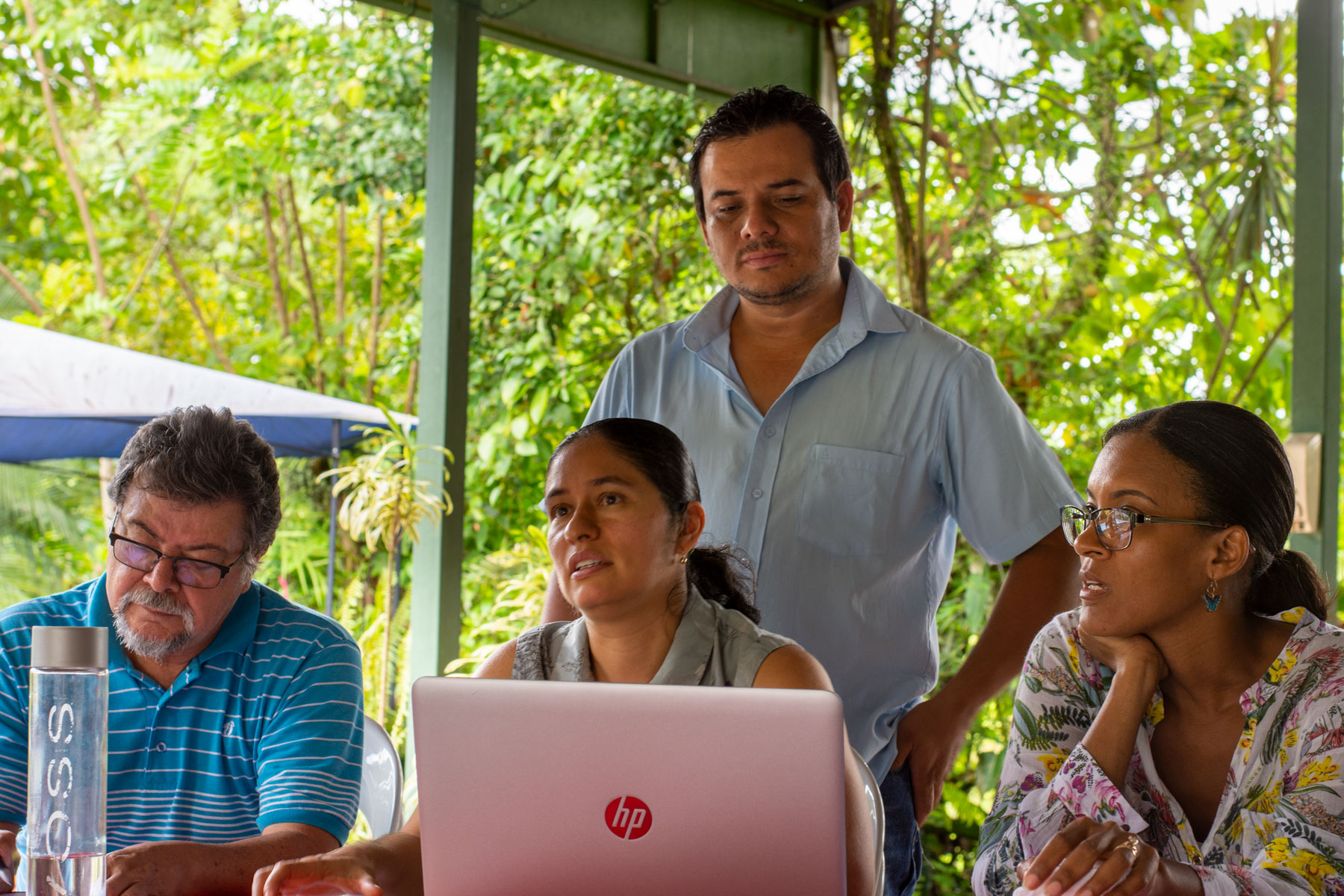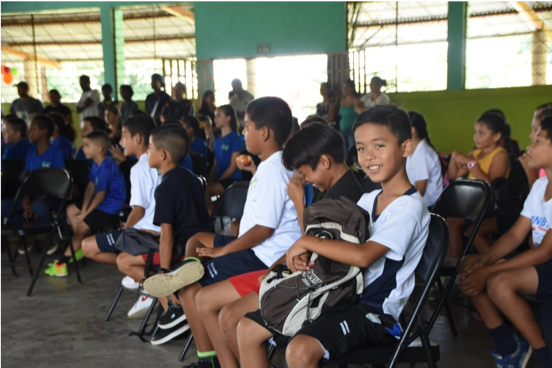Parismina Biological Corridor: Transformational Leadership for Sustainability
A biological corridor is a swath of land set aside to provide wildlife with safe passage between discrete conservation areas. Such corridors allow for the flow of species between diverse ecosystems, thereby boosting biodiversity, enabling crucial ecological and evolutionary processes, protecting natural resources, and involving nearby communities.
Parismina Biological Corridor
In 2018, EARTH University, the Costa Rican Electricity Institute (ICE), the Tortuguero Conservation Area, the Municipality of Guacimo, the production sector, and community members joined efforts to achieve the approval of the Parismina Biological Corridor – nicknamed Ruta del Pez Bobo (Route of the Bobo Fish) –by SINAC, the National System of Conservation Areas of Costa Rica.Measuring more than 32,000 hectares, this new biological corridor serves as a bridge between two large conservation areas: the Colorado-Tortuguero Conservation Area (internationally renowned for its biodiversity) and Acuíferos (the primary water-generating area for nearby communities).
The corridor’s nickname comes from the importance of the bobo fish – a culturally valued species that contributes greatly to the local ecosystem. This fish and its migration will benefit enormously from the biological corridor and its rich river system. Other species such as the jaguar, tapir and macaw will also benefit from the corridor’s creation.
EARTH has supported this effort by including the Escalera de Mono Reserve, an expansive nature reserve on the University’s Guacimo campus, in the protected area. In addition, EARTH has also been advising governmental agencies and local community groups on the conformation and implementation of the corridor. “We are one of the principal institutional promoters of this natural space because of its great benefits to the environment and communities,” says Javier Fallas (’08, Costa Rica), program coordinator at EARTH Futures.
EARTH is grateful for the support of technical and financial partners who have joined this effort. For example, CRUSA (Costa Rican USA Foundation for Cooperation) has played an essential role, and the CRUSA- EARTH partnership has enabled the comprehensive execution of the corridor’s strategy.
Transformational leadership
EARTH Futures is a global platform that advances transformational leadership education, the development of innovative solutions to socio-environmental problems, and strategic collaboration. Currently, EARTH Futures is developing three initiatives within the corridor to raise awareness about its benefits and importance and to advance innovative sustainable development solutions with local communities.
1. Aula Azul Abierta (Open Blue Classroom) is an innovative, participatory learning methodology that EARTH is promoting with three groups that want to promote the biological corridor.
The first is a coalition of six ASADAS (committees that manage local aqueducts and sewage systems) that is interested in joining forces with the project in order to grow and improve the management and protection of the canton’s water.
In addition, EARTH is offering members of the Pocora community workshops about water use and protection. “We have received a clear and compelling lesson that has enabled us to understand the great value that water has and the necessity of protecting it,” says Francisco Reyes, EARTH staff member and coordinator of the learning group. “We meet monthly with a diverse group of empowered kids and adults – all committed to the protection of our water resource.”
The third group includes environmental leaders from Guacimo, who are being trained to promote water protection in the region.
2. Fortalecimiento del Liderazgo Comunal (Strengthening Community Leadership) is an effort to support the development of young environmental leaders from the community of Parismina. “The most beautiful part of these processes is that the youth are building their own projects,” Fallas explains. “At EARTH Futures, we provide support in the form of facilitation and guidance.” In this case, the youth group has already formed an Environmental Commission for the area and regularly performs waste collection in the community.
3. Green Economy is an initiative of the CRUSA-EARTH partnership focused on strengthening sustainable value chains in partnership with local organizations in the corridor, including Coopebajura – a cooperative of 20 beef and dairy producers. “We have made significant strides toward getting environmental efforts to translate into business opportunities,” Fallas says. The University has provided corporate social responsibility consulting to area businesses and has spearheaded meetings between Hacienda Ojo de Agua (a pineapple-producing company) and local residents to communicate community needs and jointly pursue strategies for socio-economic growth.
Education for Leadership
In early 2018, EARTH and ICE formed a partnership to inspire the children of communities within the biological corridor. During in-school workshops about solid waste, water and biodiversity, children participate in practical and experiential learning opportunities. In August, the partners organized the Festival del Agua y Río (Water and River Festival), a day-long celebration where 110 children participated in creative, interactive learning exercises to raise awareness and understanding about the corridor and its rivers. Sixteen EARTH students helped lead the activities. For the University, the Parismina Biological Corridor is a successful effort thanks to vibrant inter-institutional collaboration, full-hearted community participation, and a tireless quest for innovative sustainable development opportunities.To learn more about EARTH Futures, please visit www.earthfutures.earth







